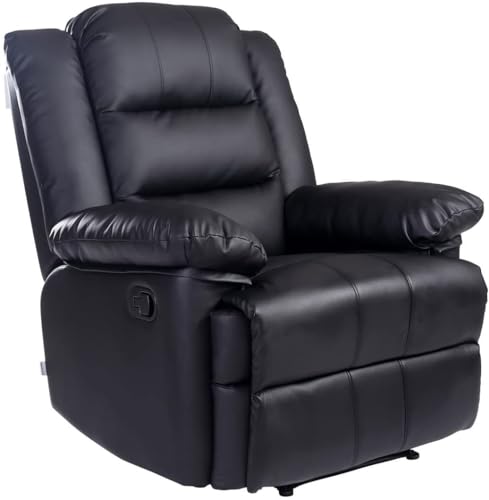Why No One Cares About Modern Recliners
The Evolution of Modern Recliners: Comfort and Design in the 21st Century
Modern recliners have transcended their standard function as easy, adjustable seating choices. As soon as restricted to the worlds of function, these chairs have actually progressed into advanced pieces of furnishings that integrate ergonomic style, design, and innovative technology. Today's recliners are not just furniture; they are an essential part of the home environment, enhancing relaxation, home entertainment, and total well-being. Recliner Cinema Chair will explore the evolution of modern recliners, explore different types and features, and address some frequently asked concerns.
A Brief History of Recliners
The story of recliners began in the late 19th century when they initially became a development in furniture style. Originally described “lazy young boys,” these chairs were developed for comfort and relaxation. For many years, their material composition, ergonomic styles, and performances have actually dramatically altered, leading to the modern recliner we see today.
Innovation Through Time
The development in technology over the decades has played a crucial role in the development of modern recliners. Early recliners included fundamental reclining mechanisms, generally relying on mechanical levers. On the other hand, today's models include numerous technological innovations, consisting of electric motors and adjustable functions that enable users to customize their seating experience.
Secret Milestones
Year
Turning point
1928
Intro of the first reclining chair
1950s
Mass production and marketing of recliners
1980s
Incorporation of swivel and glider mechanisms
2000s
Rise of ergonomic designs and memory foam
2010s
Integration of clever technology and USB ports
The Anatomy of a Modern Recliner
Modern recliners come loaded with a variety of features created to improve user convenience. Understanding these functions can assist customers make well-informed choices when picking a recliner.
Key Features to Consider
Reclining Mechanism
- Manual recline: Operated with a lever or a latch.
- Power recline: Uses a motor for uncomplicated reclining, often with several positions.
Material Options
- Leather: Offers a classic, elegant feel.
- Fabric: Available in various colors and textures, ideal for family use.
- Synthetic leather: A more inexpensive and animal-friendly alternative to real leather.
Ergonomics
- Back assistance: Critical for back health, adjustable options offered.
- Head and neck assistance: High-back styles and built-in headrests.
- Ottoman compatibility: Many modern recliners include integrated footrests or matching ottomans.
Technological Additions
- USB charging ports: Convenient connection for devices.
- Massage features: Varying intensity levels for relaxation.
- Heating functions: Helps soothe aching muscles.
Design Styles
- Contemporary: Sleek, minimalist designs ideal for modern homes.
- Traditional: Classic styling and deep cushions for a cozy feel.
- Eco-friendly choices: Made from sustainable products.
Kinds Of Modern Recliners
In the varied world of modern recliners, different designs cater to different requirements and tastes. Here's a rundown of the most popular recliner types today:
Popular Recliner Types
Wall-Hugger Recliners
- Require very little space, ideal for smaller sized homes.
Lift Recliners
- Geared up with a lifting system that carefully helps users in standing up.
Rocker Recliners
- Integrate the reclining and rocking functions, perfect for relaxation.
** reclining Sectionals **
- A sectional sofa that allows multiple people to recline concurrently.
Home Theater Recliners
- Developed for cinema-like experiences, frequently featuring cup holders and reclining seats.
The Best Places to Use Modern Recliners
Modern recliners can enhance various living spaces in a home. Here are some perfect locations:
- Living Room: The main event area for relaxation and home entertainment.
- Home Theater: Upgrades the movie-watching experience with convenience and design.
- Bed room: Serves as a comfortable spot for reading or winding down before sleep.
- Office: Offers a relaxing break area during long work hours.
Frequently Asked Questions (FAQs)
What is the average lifespan of a recliner?
The lifespan of a recliner can vary substantially based upon its building and use. Nevertheless, a top quality recliner can last anywhere from 7 to 15 years with appropriate care.
How typically should I clean my recliner?
It's advisable to clean your recliner a minimum of when a month. Use a microfiber cloth for fabric recliners and a soft leather cleaner for leather chairs to preserve their look and hygiene.
Are power recliners more expensive than manual recliners?
Usually, yes. Power recliners use innovative innovation that typically comes at a greater price point compared to manual recliners.
Can recliners be repaired if they break?
Yes, many recliners can be repaired. Issues such as damaged mechanisms or harmed upholstery can typically be dealt with through expert repairs, depending upon the seriousness.
What should I look for when buying a recliner?
Think about aspects such as the reclining system, product, ergonomic features, size, design, and any extra technology that fits your way of life and home design.
The modern recliner has actually come a long way from its simple origins. Today's recliners are not merely practical pieces of furniture however are designed to enhance the total quality of life for their users. As innovation continues to advance and consumer preferences evolve, we can expect to see much more innovation in the world of recliners. Whether seeking an elegant focal point for a living-room or a cozy spot for relaxation, today's recliners offer something for everybody. With a vast array of choices available, selecting a recliner has never ever been much easier or more interesting.
